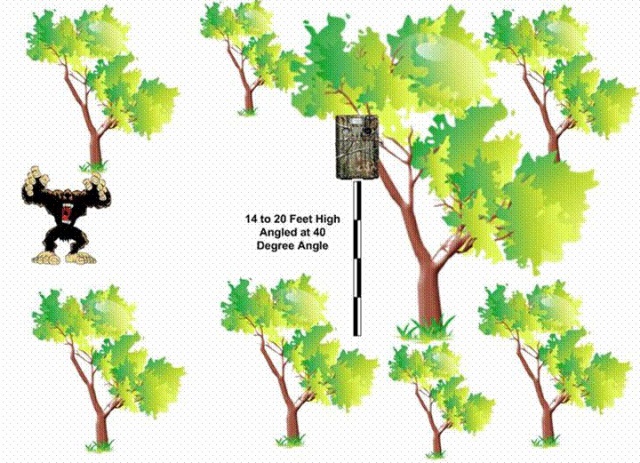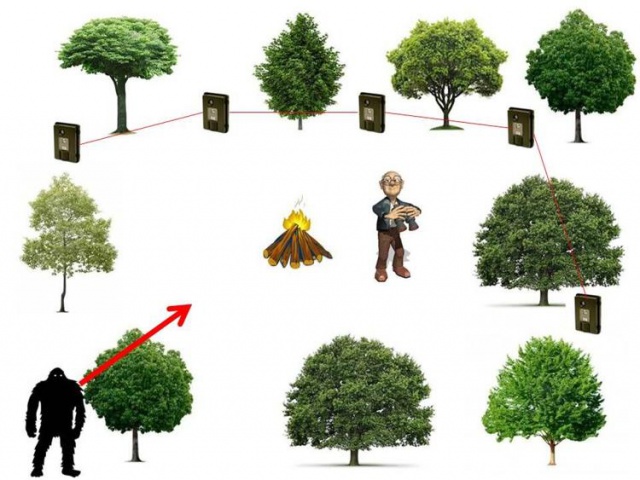(Research Tactics) Using Trailcams
It’s been the experience of the MABRC researchers that Bigfoot will avoid trailcams. The reasoning is unclear why Bigfoot does this, but after years of trailcams being placed in the woods, not one decent trailcam picture has emerged.
Even the placement of trailcams at heights well above Bigfoot eye level have failed to produce the results desired.
What MABRC Senior Researchers have begun doing is to place trailcams in locations that will funnel the Bigfoot into areas where they can be observed.
By placing trailcams on 3 sides of a base camp, the Bigfoot will avoid these areas and come into close proximity of the camp on the side where no trailcams are placed.
Other ways to deploy trailcams is to hide them in containers that hopefully the Bigfoot will open to see what is inside. Putting them in tents and leaving the flaps unzipped in hopes that Bigfoot will look into it and get it’s picture taken. When leaving a camp unattended, take a trailcam and set it in a chair and cover it with a jacket or blanket, leaving the sensor and camera lens uncovered so it will activate.
Still the debate remains, does Bigfoot intentionally avoid trailcams, this is something that will always remain heated among researchers. For the MABRC, the foremost question is how to outsmart the Bigfoot and find ways that trailcams can be deployed to be the most effective. If continued success is achieved by channeling the Bigfoot into areas like the MABRC have been doing on many of their expeditions, this should be the recommended tactic used by researchers in the field.
Article from Stilwell Democrat Journal about trailcams.
People ask all the time, why don’t we use trail cameras to catch pictures of Bigfoot, or why don’t we catch Bigfoot on the trail cameras.
The Mid-America Bigfoot Research Center has come to the conclusion that Bigfoot tends to avoid trail cameras that are deployed because they know what is in their woods, and this box thing suddenly pops up in the area, they don’t know what it is and avoid it. You have to think too, that the lens does resemble the open end of a gun barrel, and I’m sure they have seen the old-style cameras light up the entire area with a bright flash. Once, while researching near Stigler, Oklahoma, a team of researchers was on a ridge line that overlooked a creek flowing through a valley, when in the middle of the night, the woods in the valley lit up like a bolt of lightning had hit it. Wasn’t lightning, it was a trail camera going off and it lit up the whole area.
So, the MABRC uses the trail cameras being avoided by Bigfoot to their advantage. Taking trail cameras that don’t even work anymore (as well as some that do), the researchers will place them in an arc around the camp or campfire and use this like a perimeter fence. The Bigfoot wants to get close to check out things but will avoid the trail cameras, and come in from the direction where no trail cameras have been placed, not realizing it’s really a trap, the researchers are concentrating on that area with night vision and thermals.
Another tactic used by the MABRC, is to place working trail cameras about 20 feet above in the trees, angled downward. Above the eye level of the Bigfoot, they don’t really see the cameras until the picture gets snapped. It still hasn’t provided any good evidence yet, and newer approaches are to mount the trail cameras onto camera tripods and placed them near vehicles and buildings and use what is referred to as plot watchers, which takes a picture once a minute, in hopes that a Bigfoot will be caught outside the range of the motion detector during one of those pictures.
Other uses of trail cameras are placement in the bottom of ice chests, so that when a Bigfoot or other animal takes off the lid, a picture is taken of them looking in, placing it in camp chairs with clothing wrapped around to distort the look of the device, and even placing the cameras in wheel wells of vehicles and on back bumpers. Perhaps one day, one of these tactics will deliver a full frontal view of a Bigfoot’s face, with a big surprised look on it as the flash, or IR flash, illuminates his face and probably temporarily blinds him.

